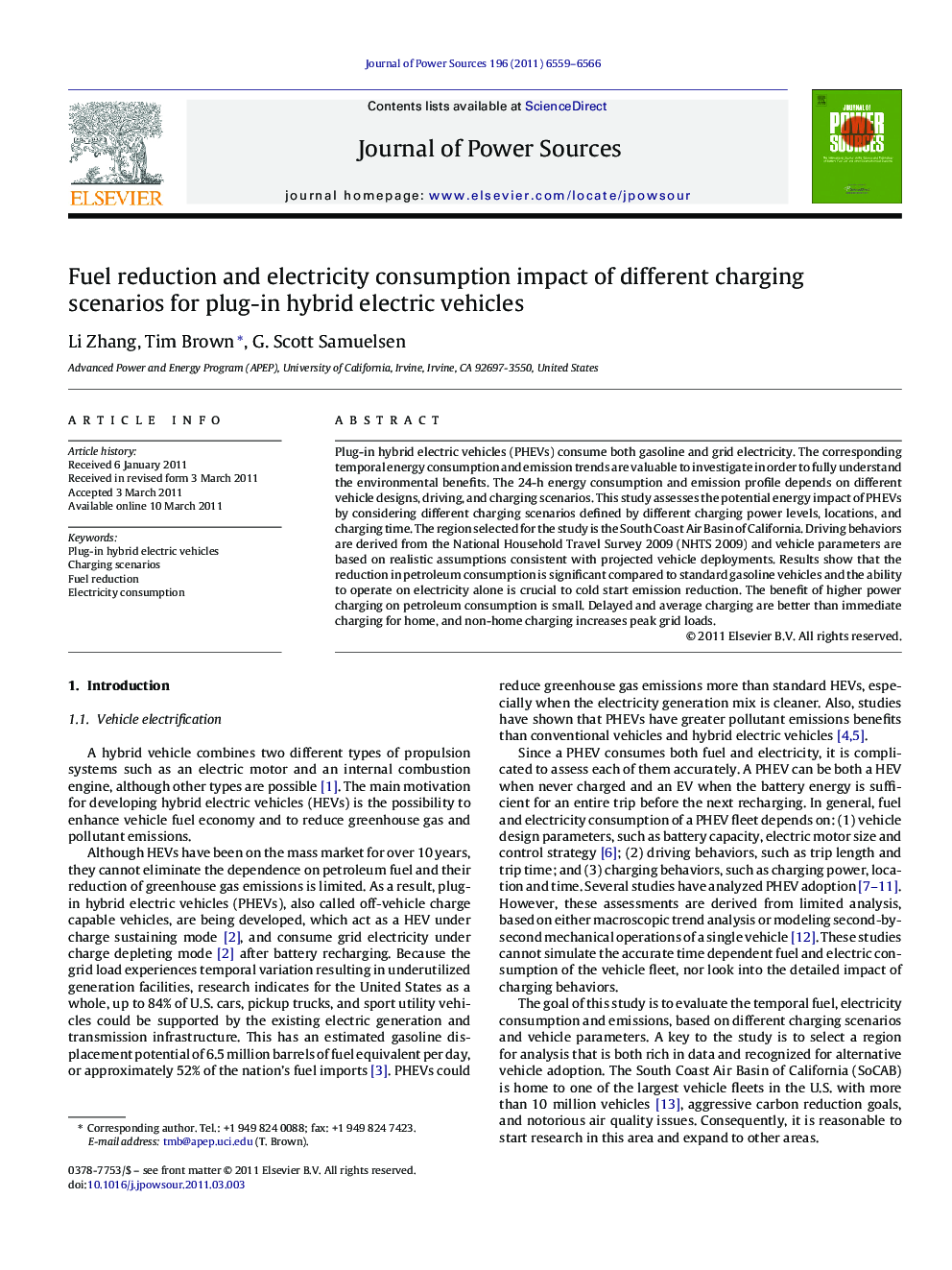| کد مقاله | کد نشریه | سال انتشار | مقاله انگلیسی | نسخه تمام متن |
|---|---|---|---|---|
| 10567505 | 973278 | 2011 | 8 صفحه PDF | دانلود رایگان |
عنوان انگلیسی مقاله ISI
Fuel reduction and electricity consumption impact of different charging scenarios for plug-in hybrid electric vehicles
دانلود مقاله + سفارش ترجمه
دانلود مقاله ISI انگلیسی
رایگان برای ایرانیان
کلمات کلیدی
موضوعات مرتبط
مهندسی و علوم پایه
شیمی
الکتروشیمی
پیش نمایش صفحه اول مقاله

چکیده انگلیسی
⺠PHEV16 and PHEV40 can reduce fuel consumption 45% and 70% respectively, compared to the corresponding HEV by only charging at home with Level 1 charging at a maximum of 1.44 kW. The cold start criteria pollutant emission reductions are 65% and 88%, respectively. ⺠Increasing charging power to 7.2 kW at home, home and work related locations, and anywhere can benefit less than 5%, 10% and 20% on fuel reduction for PHEV 32 compared to 1.44 kW charging at these three locations. Considering the massive installation of infrastructure that would be required for high power, non-home charging locations, large batteries with home 1.44 kW charging show the potential for considerable fuel reduction with minimal infrastructure investment. ⺠Immediate home charging results in an electricity demand peak from 6:00 pm to 9:00 pm, averaging less than 1 kW per vehicle. Increasing immediate home charging power from 1.44 kW to 7.2 kW would undesirably shift the peak hour closer to the existing grid peak. ⺠By knowing the starting time of the next trip, delayed and average charging strategies can be implemented having the same fuel reduction as immediate charging, but different instantaneous electricity consumption impacts. For home related locations, delayed charging can move the PHEV charging peak hour to the morning to avoid the existing grid peak hour, smooth the PHEV consumption curve, and decrease the PHEV demand peak load by 50%. ⺠Charging at non-home locations adds to the existing peak grid load during day time, between 9:00 am and 5:00 pm. Immediate, delayed, and average charging show similar results in this period. It is not likely to eliminate this drawback by using more intelligent charging strategies due to the property of people's driving and dwelling activity.
ناشر
Database: Elsevier - ScienceDirect (ساینس دایرکت)
Journal: Journal of Power Sources - Volume 196, Issue 15, 1 August 2011, Pages 6559-6566
Journal: Journal of Power Sources - Volume 196, Issue 15, 1 August 2011, Pages 6559-6566
نویسندگان
Li Zhang, Tim Brown, G. Scott Samuelsen,